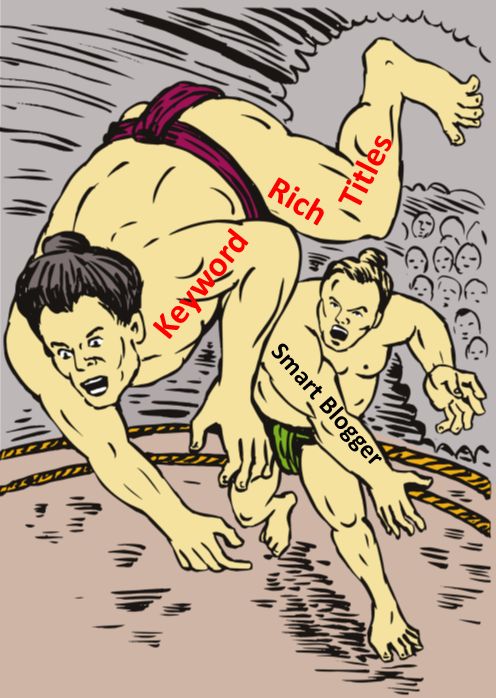There are some SEO rules that you should break. While conventional SEO wisdom advises certain types of behavior, there are times when that advice should be ignored. SEO must be viewed as part of a larger overall marketing picture, and sometimes other considerations must rule the day. Below are three situations where the standard SEO advice is not always the best course of action.
Titles & Headlines
You are used to being told that you need to load these with keywords. More progressive SEO firms may tell you not to overdo it; and, there are even cases where you might not think about “SEO titles” at all. Unlike conversion-oriented pages (e.g., e-commerce pages), I don’t think about titles when it comes to blog posts.
For the record, in my entire career as a digital marketer, I have never done any keyword research for any blog post or article I have created. Think about it; when you are writing a blog post, what really is your objective?
Are you trying to rank for your money term on a blog post? What are the chances that you’re going to convert? Hopefully, the purpose is to build your brand and reputation. If that is the case, your goals should be engagement and building your brand. How do you do that?
You focus on attention-grabbing headlines!
These are often not “keyword rich.” In fact, if your objective is to get your post shared and/or read, the headline is the most important part of your post. If you have been active in social media (you should be), and you have built a decent presence there, a good headline will drive social shares, and that will drive links to your content. What do you think will do more for your SEO — the links or the keyword-rich title? The links will win that battle every time.

Important Point: The story with e-commerce pages, and many other types of pages, is quite different. I still heartily recommend appropriate SEO optimization of title tags and heading tags for those types of pages.
Design For Shareability
The notion of creating enticing, shareable content goes well beyond title tags and heading tags. When creating a blog post, the keyword should not really be a factor in the discussion. Start with that attention-grabbing title and then follow up with great content that generates a strong response from your readers.
You can’t give writers a list of keywords they are supposed to put into a post and expect them to also do a good job creating great content. To write awesome stuff, they need to think more about these types of things:
- How they can create an emotional response
- How to write short, concise paragraphs (“write tight”)
- How to use images that can make the post visual
- What research they need to do to create world-class content instead of recycled BS
- Plus many other writing basics that will make the content more shareable
These areas of focus are already demanding. In addition, you want your writers to create the most semantically-rich content possible. The best way to do this is to have them focus 100% of their energy on creating world-class content. Semantic richness follows automatically from that.
Duplicate Content
We all know that duplicate content is bad. So we should never do this on purpose, right? Wrong. There are times when it makes perfect sense to go ahead and duplicate. For example, in September 2013, I put up a post on the Impact of Google Plus Shares on Non-Personalized SEO on the Stone Temple Consulting (STC) website.
I also posted the results of the study on Search Engine Land. While the two versions of the content were not exact copies of each other, the overlap was substantial. The SEL article was over 2,200 words, and about 2,000 of them were verbatim from the longer version on the STC site.
Why would I do such a thing? Simple — SEL has a larger audience, and a different audience. Posting there provided the study with the most visibility. Those that wanted the more comprehensive version of the study could go to the STC website. We probably received more traffic to our website by doing this, than we would have if we posted it only on the STC site. Also, chances are really good that it helps drive our social media presence more this way, as well.
Note that whenever you do something like this, if you can, make sure you do one of the following:
- Get a rel=canonical from the article copy to the original article
- If you can’t do that, get a link from the article copy to the original article (which is what we did with SEL in my example)
- NoIndex the article copy

Try to get at least one of these three things put in place. However, even if you can’t do one of them, you may still want to allow a copy of your content to be published if the visibility boost is large enough!
Summary
No, I am not saying you should ignore SEO. The search engines still need our help in a lot of different ways. But, SEO is not a paint-by-numbers game that you do automatically, no matter what. Sometimes, it needs to take a back seat to other marketing considerations. I shared three scenarios above. What are some other situations where you think SEO is secondary? Let me know in the comments below!
Contributing authors are invited to create content for Search Engine Land and are chosen for their expertise and contribution to the search community. Our contributors work under the oversight of the editorial staff and contributions are checked for quality and relevance to our readers. The opinions they express are their own.


